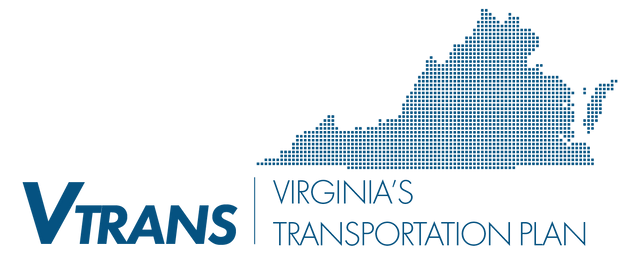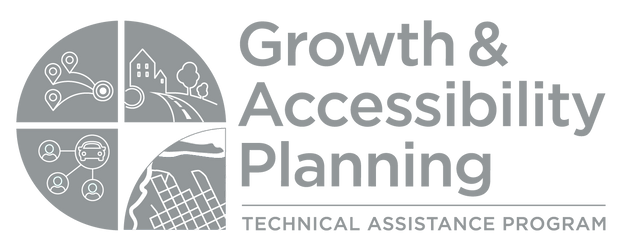Development of VTrans Strategic Actions
The approach to develop VTrans Strategic Actions include reliance on planning that is informed by VTrans stakeholders, including state-level partners and external partners such as MPOs, PDCs, and localities. The aim is to seek out gaps and/or new opportunities to make the transportation system better prepared for existing and potential challenges consistent with the CTB’s Vision. Available resources, timeframes, and feasibility will also be taken into account.
VTrans Strategic Actions relate to:
- Clarifying roles and responsibilities
- Developing stronger linkages between planning and programming
- Ensuring consistency and improving transparency
- Improving coordination between transportation and land use
- Improving efficiency of multimodal and intermodal connections
2021 VTrans Strategic Actions
The 2021 Strategic Actions can be found below.
Filters
Viewing 16 of 16 results- Intent: This action addresses VTrans Long-term Risk & Opportunity Register Item #2: Presence of unknown and unquantified flooding risk.
- Responsible Entity(s): VDOT
- Status: Underway
- Intent: This action addresses VTrans Long-term Risk & Opportunity Register Item #4: Proactively eliminate or mitigate identified flooding risks.
- Responsible Entity(s): VDOT, DRPT
- Status: Underway
- Intent: This action addresses VTrans Long-term Risk & Opportunity Register Item #4: Proactively eliminate or mitigate identified flooding risks.
- Responsible Entity(s): VDOT, DRPT
- Status: Underway
- Intent: This action addresses VTrans Risk & Opportunity Register Item # 7: Improve the state's ability to manage a transportation system with a high number of highly autonomous vehicles.
- Responsible Entity(s): VDOT
- Status: Underway
- Intent: This action addresses VTrans Risk & Opportunity Register Item # 7: Improve the state's ability to manage a transportation system with a high number of highly autonomous vehicles, and VTrans Guiding Principle # 3: Efficient delivery of programs.
- Responsible Entity(s): VDOT, DRPT
- Status: Underway
- Intent: This action addresses VTrans Risk & Opportunity Register Item # 8: Maximize safety benefits offered by highly autonomous vehicles, especially those with Automated Driving Systems.
- Responsible Entity(s): VDOT
- Status: Underway
- Intent: This action addresses VTrans Risk & Opportunity Register Item # 8: Maximize safety benefits offered by highly autonomous vehicles, especially those with Automated Driving Systems.
- Responsible Entity(s): VDOT, DRPT
- Status: Underway
- Intent: This action addresses VTrans Risk & Opportunity Register Item # 10: Minimize environmental impacts of the transportation system development.
- Responsible Entity(s): OIPI
- Status: Underway
- Intent: This action addresses VTrans Risk & Opportunity Register Items: # 11: Increased curb access conflicts in urbanized areas due to shared mobility and e-commerce vehicles; #14: Utilize shared mobility services to improve accessibility; and # 15: Improve the state's ability to manage a transportation system with a high number of shared mobility vehicles.
- Responsible Entity(s): OIPI
- Status: Underway
- Intent: This action addresses: VTrans Mid-term Needs and Priority Locations; CTB Guiding Principle # 1: Optimize return on investment; and Guiding CTB Guiding Principle # 3: Efficiently deliver programs.
- Responsible Entity(s): OIPI
- Status: Underway
- Intent: This action addresses: VTrans Mid-term Needs and Priority Locations; CTB Guiding Principle # 1: Optimize return on investment; and Guiding CTB Guiding Principle # 3: Efficiently deliver programs.
- Responsible Entity(s): OIPI
- Status: Underway
- Intent: This action addresses: VTrans Mid-term Needs and Priority Locations; CTB Guiding Principle # 3: Efficiently deliver programs and Guiding; and CTB Guiding Principle # 5: Ensure Transparency and Accountability, and Promote Performance Management.
- Responsible Entity(s): OIPI
- Status: Complete
- Intent: This action addresses CTB Guiding Principle # 3: Efficiently deliver programs and Guiding Principle # 5: Ensure Transparency and Accountability, and Promote Performance Management.
- Responsible Entity(s): VDOT, DRPT
- Status: Underway
- Intent: This action addresses CTB Guiding Principle # 1: Optimize return on investment and Guiding Principle # 3: Efficiently deliver programs.
- Responsible Entity(s): VDOT, DRPT, OIPI
- Status: Underway
- Intent: This overarching action addresses all items identified in the VTrans Risk & Opportunity Register.
- Responsible Entity(s): OIPI
- Status: Underway
- Intent: This overarching action addresses all items identified in the VTrans Risk & Opportunity Register.
- Responsible Entity(s): OIPI
- Status: Underway


